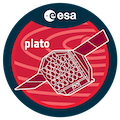Speaker
Description
Although over 5000 validated exoplanets are currently known, there are still large gaps in our understanding of how planets form and evolve. Young exoplanets (<1Gyr) hold the key to answering many of these outstanding questions, existing in one of the most interesting eras of exoplanet evolution, where their orbital locations, compositions and atmospheres are rapidly evolving. Such exoplanets can be found in a wide range of birth environments, including dense stellar clusters, diffuse stellar associations, loose co-moving groups of stars and around field stars. The accelerating expansion in the population of young exoplanets is beginning to reveal intriguing patterns about the comparative exoplanetary populations in these different birth environments. One particularly interesting feature is that the radius distribution of exoplanets orbiting young field stars is considerably more diverse than the radii of those in clusters, associations and moving groups, suggesting that different evolution pathways may exist for these two populations. In order to study such patterns in more detail it is imperative that we build a sample of well-characterized young exoplanets at precise ages across all birth environments. Here I will briefly review the state of the young exoplanet field and emerging features of the population before introducing the YOUNGSTER programme, a multifaceted approach to detecting and characterising new young exoplanets in a range of birth environments. This programme combines a purpose-built young star detrending pipeline to separate the signals of new young exoplanet candidates from the challenging activity of their young host stars, multi-colour spectroscopic follow-up of transiting young exoplanet candidates and machine-learning classification of young stellar variability. While the purpose-built detrending pipeline has already revealed dozens of new young exoplanet candidates requiring further follow-up, pilot programs on HARPS/NIRPS and CARMENES are beginning to reveal how we can leverage variations in activity signal at different wavelengths to differentiate between stellar and planetary signals. The techniques developed through this programme will aid current and next generation observing facilities like PLATO to discover and characterise smaller planets around more active hosts. Combining these planets with the imporved ages of stars observed with PLATO will provide keystone systems with which to anchor planet formation and evolution theories.

